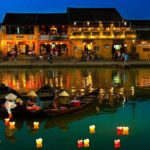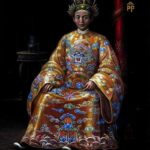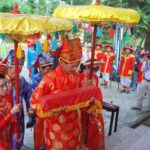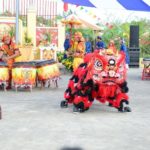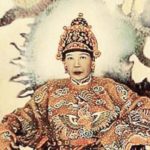Vĩnh An Pagoda, also known as the King Pagoda, is officially called Ngự Chế Vĩnh An Tự or Sắc Tứ Vĩnh An Tự. This pagoda was ordered to be built by King Minh Mang in the fourth month of his reign (1823). A year later, in 1824, the king had a bell made for the pagoda, and by his seventh year (1826), the pagoda’s signboard was erected.
Vĩnh An Pagoda stands out as the national pagoda associated with the tombs of two queens of the Nguyen Dynasty. Most of the tombs of the emperors and queens of the Nguyen Dynasty are located near the Imperial City of Hue. However, only the tombs of Queen Hiếu Văn and Queen Hiếu Chiêu are located in Quang Nam. Due to the distance from the Imperial City, it was not possible for the royal family to regularly and carefully perform rituals and offer incense at these two tombs, causing considerable concern.
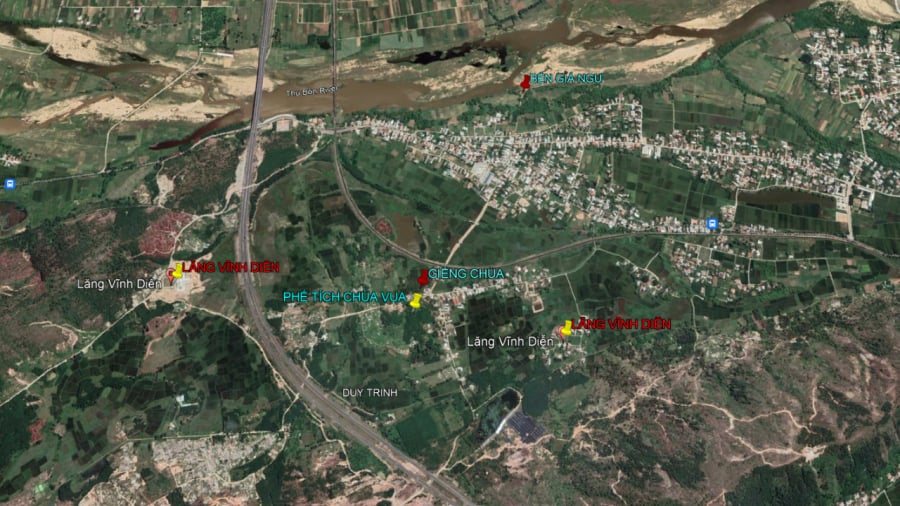
Vĩnh An Pagoda stands out as the national pagoda associated with the tombs of two queens of the Nguyen Dynasty
In the fourth month of King Minh Mang’s reign (1823), King Minh Mang instructed the local officials in Quang Nam to select a location and find people to build Vĩnh An Pagoda: “Mark the forbidden area around the two tombs Vĩnh Diễn and Vĩnh Diên. Require the officials of Quang Nam to place a signboard four trượng away from the city walls, using red-painted wooden stakes to set the boundaries and prevent people from collecting firewood and cultivating. Then, instruct them to choose a high and airy place between the two tombs to build Vĩnh An Pagoda.”
Therefore, Vĩnh An Pagoda was founded to worship the two queens, and as a result, it has a close connection with their tombs in the local area.
The pagoda is located about one kilometer west of the Vĩnh Diên tomb (also known as the Upper Tomb) and about five hundred meters east of the Vĩnh Diễn tomb (Lower Tomb). All three structures are located on high hills in the west of Chiêm Sơn valley, in Chiêm Sơn village, Duy Trinh commune, Duy Xuyen district, Quang Nam province today.
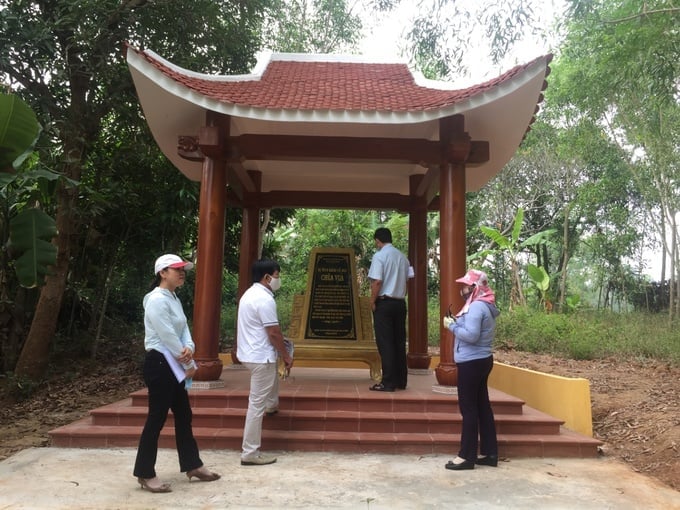
Vĩnh An Pagoda is located about one kilometer west of the Vĩnh Diên tomb and about five hundred meters east of the Vĩnh Diễn tomb
According to the memories of the elderly in the village, the ancient King Pagoda was located at Gò Chùa (also known as Gò Đồng Cốc), in Cây Cốc xứ of Chiêm Sơn village. Gò Đồng Cốc or Gò Chùa Vua was once part of the Cham architectural relics. The pagoda stood on a hill, facing southeast, opposite the Vĩnh Diễn tomb. Therefore, research has shown that Vĩnh An Pagoda “was built on the foundation of an ancient Cham tower”.
Currently, there are no specific traces of Vĩnh An Pagoda left, but the location of the ancient pagoda can still be identified, on the west side of the ancestral hall belonging to the Lê Văn clan, near the current Vua Pagoda monument. Previously, the road connecting the pagoda to the two tombs was very short and convenient to travel on a dirt road next to the pagoda, in an east-west direction.
Along the North-South road from the pagoda to the south bank of the Thu Bồn River, about one kilometer long, there is still a story about the place called Giá Ngự Ferry. This place was used by kings and members of the royal family whenever they came to perform self-worship rituals, where dragon boats or official boats docked to continue the journey to the pagoda or visit the tombs.
Vĩnh An Pagoda, located near the river and on top of a high hill, is surrounded by mountains in the Chiêm Sơn Tây valley, occupying a strategic position. The landscape around the pagoda and the two tombs of princesses is not only beautiful but also extremely peaceful and solemn.
This pagoda, also known as Sắc Tứ Vĩnh An Tự, plays a key role in the network of Buddhist pagodas in Quang Nam under the Nguyen Dynasty. The pagoda was built according to the instructions of Emperor Minh Mang to commemorate Buddhist teachings and the two queen consorts, and as such, it is mentioned in many historical records of the Nguyen Dynasty.
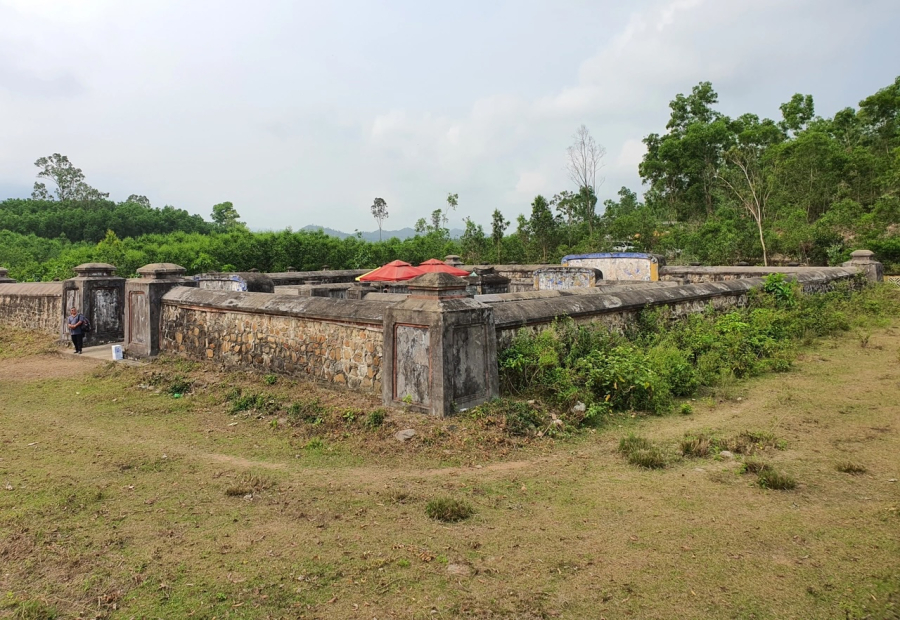
The panoramic view of the tomb complex of Empress Đoàn Quý Phi
The uniqueness of Vĩnh An Pagoda lies not only in the purpose of its construction but also in its position as a unique national pagoda, different from regular temples and other national pagodas established by the Nguyen kings.
From its founding in 1823 until its destruction around 1945-1946, Vĩnh An Pagoda existed for over 120 years, making a significant contribution to the development of Buddhism and the nation.
Today, in the archaeological site, scattered architectural fragments are still visible over a large space. Some parts of the land have been flattened for settlement, revealing walls made of ancient bricks of the temple and tower structures. During their daily lives, people have discovered many precious artifacts, although a considerable number of them have been lost. Architectural and decorative materials such as doorsteps, altars, roofs, stone steles, door frames… have been reused by local residents for various purposes such as building stairs, embankments, paved roads, or fences.

























